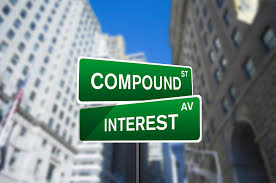
The Power of Compound Interest in Building Retirement Savings
Contents
- 1 Compound interest in retirement savings
- 1.1 The Power of Compound Interest in Building Retirement Savings
- 1.1.1 What is Compound Interest?
- 1.1.2 The Role of Time in Compounding for Retirement
- 1.1.3 Why Compound Interest is Vital for Retirement Savings
- 1.1.4 Best Ways to Leverage Compound Interest in Retirement Savings
- 1.1.5 The Cost of Waiting: Delayed Contributions and Lost Compounding
- 1.1.6 Real-Life Scenarios: How Compound Interest Impacts Retirement Savings
- 1.1.7 Conclusion:
- 1.1.8 FAQs:
- 1.1.8.1 1.What is compound interest?
- 1.1.8.2 2.How does compound interest benefit retirement savings?
- 1.1.8.3 3.Why is starting early important in retirement savings?
- 1.1.8.4 4.How much should I contribute monthly to benefit from compound interest?
- 1.1.8.5 5.Can compound interest help counter inflation?
- 1.1.8.6 6.What types of accounts work best with compound interest?
- 1.1.8.7 7.Should I reinvest dividends for retirement savings?
- 1.1.8.8 8.Is compound interest useful for late starters?
- 1.1.8.9 9.What is the time value of money in compound interest?
- 1.1.8.10 10.How does compound interest differ from simple interest?
- 1.2 Compound interest in retirement savings
- 1.3 ITI Share Price Rallies 9% as Company Secures Rs 3,022 Crore BharatNet Project
- 1.1 The Power of Compound Interest in Building Retirement Savings
Compound interest in retirement savings
The Power of Compound Interest in Building Retirement Savings
What is Compound Interest?
At its core, compound interest is interest calculated on the initial principal, which also includes all of the accumulated interest from previous periods. This means that instead of only earning interest on your original investment, you earn interest on the initial investment and the interest it has already earned. This cycle of “interest on interest” accelerates the growth of your funds, making it ideal for retirement savings.
For instance, if you invest $1,000 at a 5% interest rate compounded annually, your investment will grow to $1,628 in 10 years. Without compounding, the amount would only reach $1,500. This extra growth is what makes compound interest so essential for retirement savings.


The Role of Time in Compounding for Retirement
One of the most significant factors in leveraging compound interest is time. The earlier you begin saving, the more your funds will grow due to compounding. Retirement accounts like 401(k)s and IRAs are designed with this principle in mind, encouraging long-term contributions.
Example of Compounding Over Time
Consider this: If you start saving $200 per month at age 25 with a 7% annual return, you could have around $500,000 by age 65. If you wait until age 35 to start saving the same amount, you’d accumulate only about $240,000 by age 65. This drastic difference demonstrates the impact of time in allowing compound interest to work its magic.
Why Compound Interest is Vital for Retirement Savings
1. Growth Without Additional Contributions
Once compound interest kicks in, your savings begin to grow even without additional contributions. This means you won’t have to rely solely on increasing deposits to boost your retirement fund.
2. Inflation Protection
Compounded growth helps counter the effects of inflation. Over the long term, compound interest allows your investments to grow at a rate that can outpace inflation, preserving the purchasing power of your retirement savings.
3. Boosts the Impact of Tax-Advantaged Accounts
Accounts like IRAs and 401(k)s offer tax advantages that work hand-in-hand with compound interest. By investing pre-tax income and deferring taxes until retirement, you’re able to maximize growth without tax deductions eating away at your gains.


Best Ways to Leverage Compound Interest in Retirement Savings
1. Start Early – The Sooner, the Better
Starting your savings early is the single most effective way to harness compound interest for retirement. Even if you can only contribute a small amount initially, the time value of money allows those contributions to grow exponentially over decades.
2. Regular and Consistent Contributions
Making regular contributions, even if small, builds up a significant nest egg over time. Consider setting up automatic contributions to maintain consistency, which is essential for achieving long-term growth.
3. Invest in Growth-Oriented Assets
While conservative investments like bonds provide stability, growth-oriented assets like stocks and mutual funds tend to have higher returns, allowing compound interest to accumulate at a faster rate. Consider a balanced portfolio that aligns with your risk tolerance but also capitalizes on higher-return investments.
4. Reinvest Returns for Maximum Growth
Reinvesting dividends and other returns within your retirement accounts can boost the compounding effect. Instead of withdrawing earnings, reinvesting them allows you to increase the principal amount, further accelerating the growth of your retirement savings.
5. Utilize Tax-Advantaged Accounts
Tax-advantaged accounts such as 401(k)s, IRAs, and Roth IRAs are specifically designed to help build retirement savings. These accounts shelter your investments from taxes, allowing compound interest to grow your retirement fund more effectively.


The Cost of Waiting: Delayed Contributions and Lost Compounding
Procrastinating on retirement savings comes at a high cost. Waiting just a few years to start can mean missing out on thousands of dollars in compounded growth. Here’s a quick example:
Imagine you decide to wait until age 40 to start saving for retirement. To achieve the same retirement savings as someone who started at 25, you would need to save significantly more each month due to the reduced time for compounding.
Real-Life Scenarios: How Compound Interest Impacts Retirement Savings
Scenario 1: Starting at Age 25
- Monthly Contribution: $200
- Annual Return: 7%
- Savings by Age 65: ~$500,000
Scenario 2: Starting at Age 40
- Monthly Contribution: $500
- Annual Return: 7%
- Savings by Age 65: ~$300,000
The difference is clear—starting early and contributing consistently is the key to maximizing compound interest.


Conclusion:
Compound interest is not just a financial concept; it’s a powerful ally in securing a comfortable retirement. By understanding how it works and starting early, you can watch your retirement savings grow exponentially over time. Whether you’re 25 or 45, there’s no better time than now to harness the power of compound interest. Compound interest in retirement savings, Make consistent contributions, invest wisely, and let compound interest work its magic on your path to financial freedom.
FAQs:
1.What is compound interest?
A. Compound interest is the process of earning interest on both the principal and the accumulated interest over time.
2.How does compound interest benefit retirement savings?
A. Compound interest accelerates the growth of retirement savings, maximizing returns over time with minimal effort.
3.Why is starting early important in retirement savings?
A. Starting early allows compound interest to work for a longer period, significantly increasing retirement funds.
4.How much should I contribute monthly to benefit from compound interest?
A. Any amount, even small contributions, can grow substantially over time due to compound interest.
5.Can compound interest help counter inflation?
A. Yes, compounded growth can outpace inflation, preserving purchasing power in retirement.
6.What types of accounts work best with compound interest?
A. Tax-advantaged accounts like IRAs, Roth IRAs, and 401(k)s are ideal for compound growth due to deferred taxes.
7.Should I reinvest dividends for retirement savings?
A. Reinvesting dividends can boost compound growth by increasing your principal balance.
8.Is compound interest useful for late starters?
A. While early starters benefit the most, compound interest can still help late starters grow their savings effectively.
9.What is the time value of money in compound interest?
A. The time value of money highlights that the value of funds increases with time due to compounding, making early contributions valuable.
10.How does compound interest differ from simple interest?
A. Unlike simple interest, which is only calculated on the principal, compound interest grows on both the principal and accumulated interest.
Compound interest in retirement savings





















3 comments